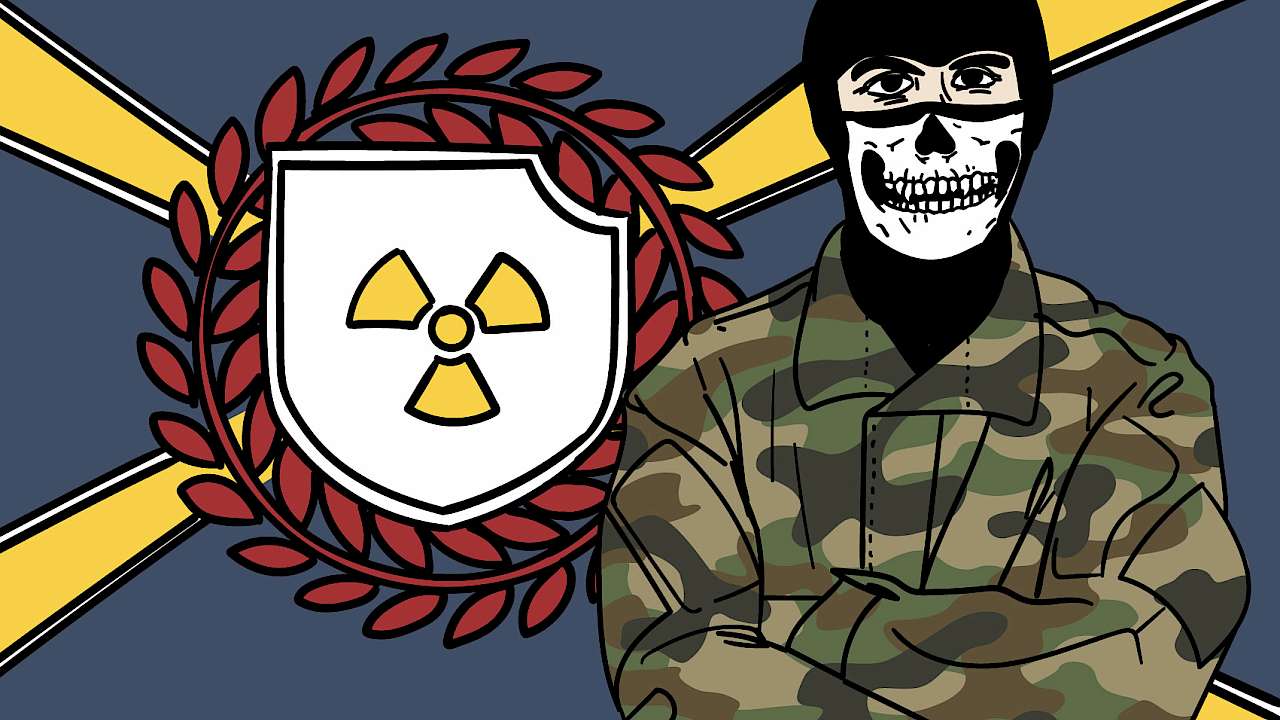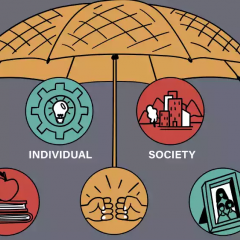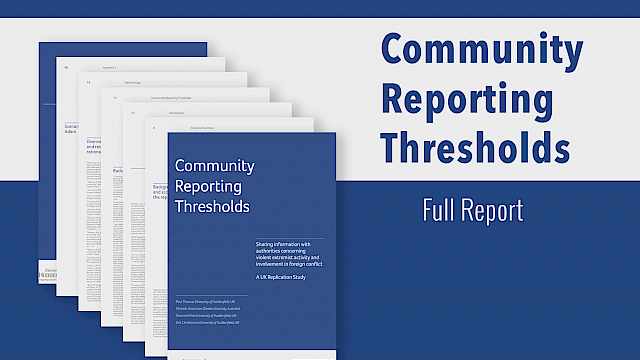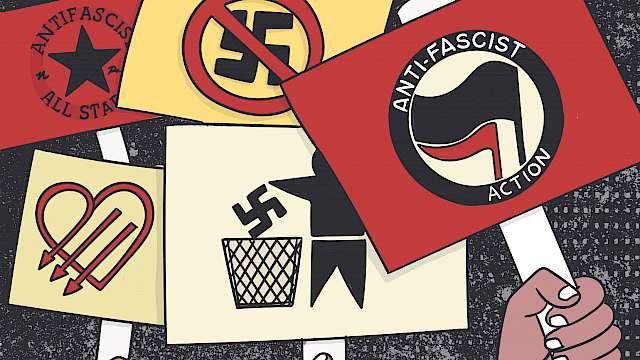Overview
- This report is part two of a three part series analysing the role of subcultural theory and the constraints and protections against violence that may be at work within extreme-right subcultures.
- By looking at a specific right-wing subculture – Siege Culture – described more fully in the previous report, this report develops the concept of differential participation: the idea that participation in extremist subcultures is not uniform and provides opportunities to engage in a variety of roles.
Differential Participation
- A key observation of this report is that participation in extreme-right subcultures takes many forms.
- Terrorism studies has paid less attention to the different roles offered by terrorist groups. Where it has, the focus of much research has been behavioural, primarily concerned with what individuals do.
- In contrast, the subcultural literature places greater emphasis on the social dimension and how individual roles mesh with the wider social environment created by subcultures.
- The subcultural literature has also added a temporal aspect, recognising that roles vary over time, with transitions sometimes accompanied by elaborate rituals and rules.
- There have also been several examples of differential participation set out explicitly within Siege Culture or adjacent spaces with different groups outlining their own roles and responsibilities.
- Combining these perspectives gives an overarching framework for analysis that considers participation as roles defined by both behaviours and the social relationships that characterise them overtime.
Differential Participation in Siege Culture
- This report seeks to identify empirical evidence of the different roles on offer within Siege Culture.
- The three key research questions that orient the analysis are:
- What behaviours can be observed in the subcultural data?
- What status do these roles attract?
- How do these roles evolve over time?
- The analysis identified four sets of roles available within the subcultural data primarily grouped by behaviour: organiser, ideologue, offender, and technician. These roles were further divided in some cases into sub-roles. The roles of women and girls is considered separately due to significantly different dynamics and the low number of cases available for analysis.
- Where possible some judgement was made on the relative status of the individual undertaking the role and how this may have changed over time.
- Despite the scattered evidence, roles within Siege Culture appear to be fluid and opportunistic. In some cases, individuals take on multiple roles as required.
- There was also evidence of status changing overt time. In some cases this was inferred from the behaviours of participants, in other cases there were clear examples of participants receiving compliments, or (more often) criticism and insults.
- Both and individual’s roles and an individual’s status were found to change over time.
- Given the limited data means that the findings should be treated more as a proof of concept rather than a comprehensive typology of roles within Siege Culture.
Conclusions
- Despite the limitations of the data, in particular the absence of internal perspectives from those directly engaged in Siege Culture, there is enough to strongly suggest that participation is differentiated in ways similar to other extreme and non-extreme subcultures.
- Both research and practice within on extremism will benefit from recognising that binary distinctions of extreme and non-extreme mask a wide range of behaviours, status, and trajectory, and that extremist participation reflects different levels of participation across a variety of roles.
- This has several broader implications for understanding risk and when designing interventions:
- If specific roles are linked to meeting individual needs, or providing individuals with specific benefits then this may limit the potential for violence because they may reward ongoing engagement in non-violent roles. Transitioning to offending roles, particularly terroristic ones, may have limited appeal for those who are well established within an extremist subculture and are satisfied with what they gain from this involvement.
- Where trajectories are altered though external action, the threat of action, or internal changes, then offending roles and potentially serious violence may become more appealing. Those tasked with policing extremist subcultures will benefit from recognising the unintended second order effects of changes in individual trajectories.
- For those tasked with working with individuals, either to pre-empt offending or to rehabilitate those who have offended, a granular understanding of subcultural participation and the meaning attached to it can be a potential indicator of the behaviours and needs a specific individual finds meaningful and necessary to their own version of a “good life”.
- The final report examines these implications in greater depth through the lens of the Good Lives Model which is used to understand the potential constraints and protections that may be associated with engagement in extremist subcultures as a function of the ‘goods’ or needs and benefits they afford.
Download this report and two others from this series below:
Read more
Altier, M. B., Boyle, E. L., & Horgan, J. G. (2022) Terrorist Transformations: The Link between Terrorist Roles and Terrorist Disengagement. Studies in Conflict & Terrorism, 45(9), 753–777. https://doi.org/10.1080/1057610X.2019.1700038
American Futurist (2021) The Hamas Example at Successful Revolution https://americanfuturist.net/the-hamas-example-at-successful-revolution/ accessed 22/11/22
American Futurist (n.d.) Staff https://americanfuturist.net/staff/ accessed 12/12/22
Ashenden, D. (2016) Your Employees: The Front Line in Cyber Security https://crestresearch.ac.uk/comment/employees-front-line-cyber-security/ accessed 7/12/22
BBC (2020) National Action: 'Miss Hitler' hopeful among four jailedd https://www.bbc.co.uk/news/uk-england-leeds-52965672 accessed 21/11/22
BBC (2021) Neo-Nazi Andrew Dymock jailed for terror and hate crimes https://www.bbc.co.uk/news/uk-england-somerset-57920928 accessed 9/12/22
Becker, H. (1963) Outsiders: Studies in the Sociology of Deviance. New York: The Free Press
Blee, K. (2003) Inside Organised Racism: Women in the Hate Movement. London: University of California Press
Cimpanu, C. (2019) Mysterious hacker dumps database of infamous IronMarch neo-nazi forum. https://www.zdnet.com/article/mysterious-hacker-dumps-database-of-infamous-ironmarch-neo-nazi-forum/ accessed 13/12/22
Clarke, V. & Braun, V. (2017) Thematic analysis. The Journal of Positive Psychology, 12(3), 297–298. https://doi.org/10.1080/17439760.2016.1262613
Collins, M. (2019) Nazi Terrorist: The Story of National Action. London: Hope not Hate
De Bruyn, P. C. (2021) Predicting behavioral profiles of online extremists through linguistic use of social roles. Behavioral Sciences of Terrorism and Political Aggression, 13(4), 295–319. https://doi.org/10.1080/19434472.2020.1775675
Dearden, L. (2021) Ben Raymond: National Action co-founder had links with Atomwaffen terrorists in US, court hears https://www.independent.co.uk/news/uk/crime/national-action-atomwaffen-division-raymond-b1951682.html accessed 9/12/22
Department of Justice (2023) Maryland Woman and Florida Man Charged Federally for Conspiring to Destroy Energy Facilities. https://www.justice.gov/opa/pr/maryland-woman-and-florida-man-charged-federally-conspiring-destroy-energy-facilities accessed 22/6/23
Gill, P., & Horgan, J. (2013) Who Were the Volunteers? The Shifting Sociological and Operational Profile of 1240 Provisional Irish Republican Army Members. Terrorism and Political Violence, 25(3), 435–456. https://doi.org/10.1080/09546553.2012.664587
Hayden, M. (2019) Visions of Chaos: Weighing the Violent Legacy of Iron March https://www.splcenter.org/hatewatch/2019/02/15/visions-chaos-weighing-violent-legacy-iron-march accessed 16/1/23
Hebdige, D. (1979) Subculture: The Meaning of Style. London: Routledge
Hoffer, E. (1951) The True Believer: Thoughts on the Nature of Mass Movements. London: Harperperennial
Huey, L., Inch, R., & Peladeau, H. (2019) “@ me if you need shoutout”: Exploring Women’s Roles in Islamic State Twitter Networks. Studies in Conflict & Terrorism, 42(5), 445–463. https://doi.org/10.1080/1057610X.2017.1393897
Iron March (2016) e-Sec By Way of Common Sense
Ironmarch.org (n.d.) The Awakening of a National Socialist
Kaminski, M. M. (2003) Games Prisoners Play: Allocation of Social Roles in a Total Institution. Rationality and Society, 15(2), 188–217. https://doi.org/10.1177/1043463103015002002
Keatinge, T., Keen, F., & Izenman, K. (2019) Fundraising for Right-Wing Extremist Movements: How They Raise Funds and How to Counter It. The RUSI Journal, 164(2), 10–23. https://doi.org/10.1080/03071847.2019.1621479
Lamoureux, M. & Makuch, B. (2019a) Online Neo-Nazis Are Increasingly Embracing Terror Tactics https://www.vice.com/en/article/8xynq4/online-neo-nazis-are-increasingly-embracing-terror-tactics accessed 7/12/22
Lee, B. & Knott, K. (2021) Fascist aspirants: Fascist Forge and ideological learning in the extreme-right online milieu. Behavioral Sciences of Terrorism and Political Aggression. 14(3) pp 216-240
Macklin, G (2022) “Praise the saints”. In J. Dafinger & M. Florin, A Transnational History of Right-Wing Terrorism (1st ed., pp. 215–240). Routledge. https://doi.org/10.4324/9781003105251-16
Macklin, G. (2018) ‘Only Bullets will Stop Us!’ – The Banning of National Action in Britain. Perspectives on Terrorism, 12(6) pp104-122
Macklin, G. & Bjørgo, T. (2022) Breivik’s Long Shadow? The Impact of the July 22, 2011 Attacks on the Modus Operandi of Extreme-right Lone Actor Terrorists. Perspectives on Terrorism, 15(3), 14-36
Macklin, G. & Lee, B. (forthcoming) “Militant Accelerationism” in the United Kingdom
Makuch, B. & Lamoureux, M. (2021) Unmasking ‘Dark Foreigner’: The Artist Who Fueled a Neo-Nazi Terror Movement. https://www.vice.com/en/article/93ynv8/unmasking-dark-foreigner-the-artist-who-fuelled-a-neo-nazi-terror-movement accessed 12/12/22
Mason, J. (2003) Siege. Solar General
Mitchell, M. M., Fahmy, C., Pyrooz, D. C., & Decker, S. H. (2017) Criminal Crews, Codes, and Contexts: Differences and Similarities across the Code of the Street, Convict Code, Street Gangs, and Prison Gangs. Deviant Behavior, 38(10), 1197–1222. https://doi.org/10.1080/01639625.2016.1246028
Muggleton, D. (2020) Inside Subculture: The Postmodern Meaning of Style. Oxford: Berg.
Otto (2022) 3D Printed Firearms: A Definitive Guide. https://americanfuturist.net/3d-printed-firearms-a-definitive-guide/ accessed 13/12/22
PA News Agency (2019) Miss Hitler hopeful was ‘central spoke’ within National Action, court told https://www.newsandstar.co.uk/news/national/17517811.miss-hitler-hopeful-central-spoke-within-national-action-court-told/ accessed 15/12/22
Perliger, A., Koehler-Derrick, G., & Pedahzur, A. (2016) The Gap Between Participation and Violence: Why We Need to Disaggregate Terrorist ‘Profiles’. International Studies Quarterly, 60(2), 220–229. https://doi.org/10.1093/isq/sqv010
Pilkington, H. (2016) Loud and Proud: Passion and Politics in the English Defence League. Manchester: Manchester University Press
Prendergast, A. (1995) Double Exposure: Underage Girls, a Nazi with a Camera, and Partying Cops--What's Wrong With This Picture? https://www.westword.com/news/double-exposureunderage-girls-a-nazi-with-a-camera-and-partying-cops-whats-wrong-with-this-picture-5055531 accessed 12/12/22
Recorder of London (2021) R. V. Cronjager: Sentencing Remarks. https://www.judiciary.uk/wp-content/uploads/2022/07/R.-v.-Matthew-Cronjager-Sentencing-Remarks.pdf
Robertson, A. (2016) 'My daughter's mixed race - should she be booted out?' Moment brave mother and her daughter stood up to neo-Nazi protestors advocating a 'free, white Britain' https://www.dailymail.co.uk/news/article-3581295/My-daughter-s-mixed-race-booted-Moment-brave-mother-daughter-stood-neo-Nazi-protestors-advocating-free-white-Britain.html accessed 9/12/22
Ross, J. I. (1996) A model of the psychological causes of oppositional political terrorism. Peace and Conflict: Journal of Peace Psychology, 2(2), 129–141. https://doi.org/10.1207/s15327949pac0202_3
Schiano, C. & Unicorn Riot (2020) LEAKED: Neo-Nazi Terrorist ‘Feuerkrieg Division’ Organizing Chats https://unicornriot.ninja/2020/leaked-neo-nazi-terrorist-feuerkreig-division-organizing-chats/ accessed 9/12/22
Shackleford, R. & Racoon (2022) Preparedness Worldview Part I. https://americanfuturist.net/preparedness-worldview-part-i/ accessed 15/12/22
Shepherd, K. (2021) A London police officer belonged to a terrorist neo-Nazi group. He was exposed by an ‘antifa’ hacker. https://www.washingtonpost.com/nation/2021/04/02/benjamin-hannam-terrorism-london-police/ accessed 13/12/22
SPLC (n.d. a) James Mason. https://www.splcenter.org/fighting-hate/extremist-files/individual/james-mason accessed 12/12/22
Texas Pete (2022a) Breaking Ties with the NSO. https://americanfuturist.net/breaking-ties-with-the-nso/ accessed 2/11/22
Texas Pete (2022b) James Mason: The Fall. https://americanfuturist.net/james-mason-the-fall/ accessed 12/12/22
Thornton, S. (1995) Club Cultures: Music, Media and Subcultural Capital. Oxford: Polity Press.
Tim Turtle (2022) The American Futurist: State of the Union. https://americanfuturist.net/the-american-futurist-state-of-the-union/ accessed 12/12/22
Winnipeg Free Press (2019) Inside a neo-Nazi group attempting to gain a foothold in Winnipeg and across the country https://www.winnipegfreepress.com/featured/2019/08/16/homegrown-hate accessed 9/12/22
Copyright Information
As part of CREST’s commitment to open access research, this text is available under a Creative Commons BY-NC-SA 4.0 licence. Please refer to our Copyright page for full details.
IMAGE CREDITS: Copyright ©2024 R. Stevens / CREST (CC BY-SA 4.0)






